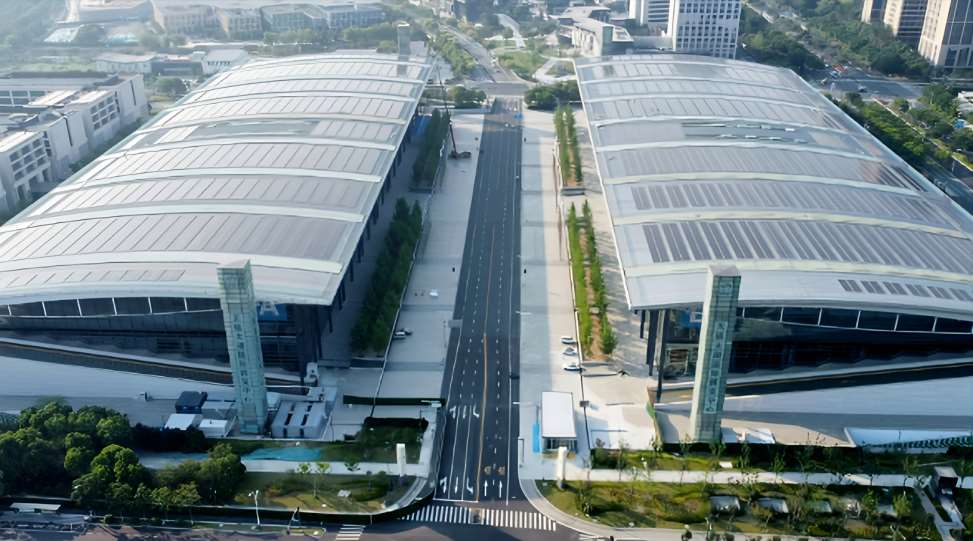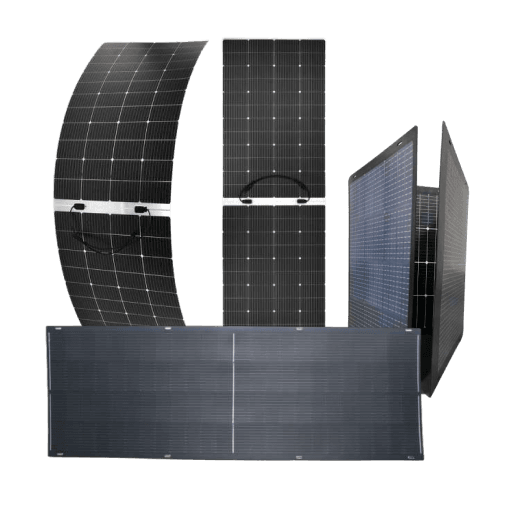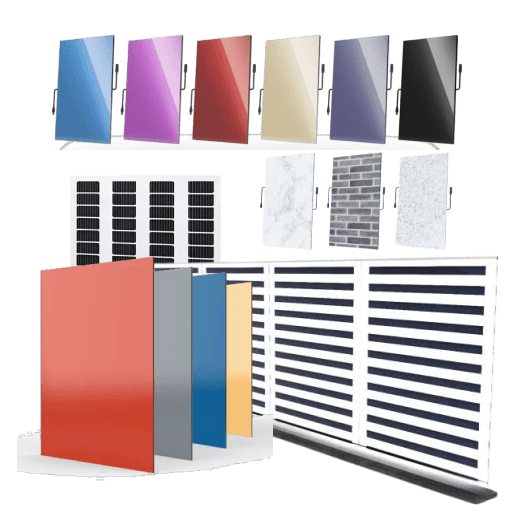BIPV dùng trong công nghiệp
Giải pháp BIPV bởi Specco2
Specco2 rất vui mừng được ra mắt dòng sản phẩm mới, thể hiện sự tận tâm của chúng tôi trong việc thúc đẩy thay đổi bền vững và thúc đẩy quá trình chuyển đổi hướng tới tương lai xanh hơn. Dòng sản phẩm sáng tạo này là một cột mốc quan trọng đối với Specco2, khi chúng tôi tận dụng chuyên môn và nguồn lực của mình để phát triển các công nghệ đột phá. Các sản phẩm mới của chúng tôi được thiết kế để cách mạng hóa cách thế giới tạo ra và sử dụng năng lượng sạch. Với lần ra mắt này, Specco2 tự tin mở đường cho một tương lai bền vững và thịnh vượng hơn, mang lại lợi ích cho cả tổ chức của chúng tôi và cộng đồng toàn cầu.

BIPV so với BAPV
Ưu và nhược điểm của cả hai giải pháp
Sự khác biệt chính giữa Điện mặt trời tích hợp trong tòa nhà (BIPV) và Điện mặt trời ứng dụng trong tòa nhà (BAPV) nằm ở cách công nghệ năng lượng mặt trời được kết hợp vào kết cấu của tòa nhà. Các hệ thống BIPV được tích hợp liền mạch vào thiết kế của tòa nhà trong quá trình xây dựng, thay thế các vật liệu thông thường như ngói lợp hoặc mặt tiền, và được thiết kế để hòa hợp về mặt thẩm mỹ với kiến trúc. Ngược lại, các hệ thống BAPV được lắp đặt thêm vào các kết cấu hiện có, thường được lắp trên mái nhà hoặc mặt tiền, và dễ thấy hơn và khác biệt về mặt chức năng so với thiết kế của tòa nhà. Trong khi BIPV cung cấp giải pháp tích hợp và thẩm mỹ hơn, BAPV cung cấp tùy chọn thiết thực và tiết kiệm chi phí để bổ sung khả năng năng lượng mặt trời cho các tòa nhà hiện có.
Cắt Cạnh Công nghệ
Triển khai công nghiệp

Tấm pin mặt trời
Tấm pin năng lượng mặt trời Flex PV 340W
Tấm pin năng lượng mặt trời Flex PV 430W
Tấm pin năng lượng mặt trời Flex PV 520W

Giải pháp BIPV
BIPV PV cho mặt tiền trong suốt
BIPV PV cho màu mặt tiền
BIPV cho mái nhà (không khung) Trong suốt
BIPV cho mái nhà (không khung) Màu đen
Giới thiệu BIPV Ngói năng lượng mặt trời
Bạn có thấy thất vọng với vẻ ngoài và hạn chế của các tấm pin mặt trời truyền thống được lắp đặt trong tòa nhà của mình không?
Điện mặt trời ứng dụng trong tòa nhà (BAPV) thường làm mất tính thẩm mỹ và tính toàn vẹn về mặt cấu trúc của công trình, dẫn đến tình trạng kém hiệu quả và khó khăn trong việc bảo trì.
Hãy tưởng tượng sự bất tiện khi phải xử lý các tấm pin mặt trời cồng kềnh làm ảnh hưởng đến thiết kế tòa nhà của bạn và có khả năng gây ra các vấn đề về kết cấu. Các giải pháp BAPV có thể không đẹp mắt và có thể không đáp ứng đầy đủ nhu cầu năng lượng hoặc tiêu chuẩn thẩm mỹ của bạn.
Khám phá Building-Integrated Photovoltaics (BIPV), một giải pháp liền mạch tích hợp công nghệ năng lượng mặt trời trực tiếp vào thiết kế tòa nhà của bạn. BIPV thay thế các vật liệu thông thường bằng các thành phần quang điện, tạo ra năng lượng sạch trong khi vẫn bảo vệ được diện mạo tòa nhà của bạn. Tận hưởng giải pháp năng lượng bền vững, hiệu quả và hấp dẫn về mặt thị giác giúp tăng giá trị cho bất động sản của bạn.
Dùng cho mục đích công nghiệp
Việc dựa vào các nguồn năng lượng truyền thống có thể dẫn đến hóa đơn cao và lượng khí thải carbon lớn hơn, với các tấm pin mặt trời thường làm hỏng diện mạo ngôi nhà của bạn. Với hệ thống quang điện tích hợp tòa nhà (BIPV), mái nhà, cửa sổ và mặt tiền của ngôi nhà bạn tạo ra năng lượng sạch một cách liền mạch, nâng cao tính thẩm mỹ và hiệu quả. BIPV tích hợp công nghệ năng lượng mặt trời vào thiết kế ngôi nhà của bạn, cung cấp giải pháp năng lượng bền vững và hấp dẫn về mặt thị giác mà không ảnh hưởng đến phong cách.
Hệ thống mái nhà: Tích hợp tấm pin quang điện vào mái nhà công nghiệp, biến những diện tích bề mặt lớn thành tài sản tạo ra năng lượng trong khi vẫn duy trì tính toàn vẹn của cấu trúc.
Hệ thống mặt tiền: Trang bị cho các tòa nhà công nghiệp mặt tiền quang điện có thể tạo ra điện đồng thời cách nhiệt và bảo vệ khỏi các yếu tố bên ngoài.
Mái che và Nhà để xe:Lắp đặt hệ thống BIPV trên bãi đỗ xe hoặc lối đi, cung cấp khu vực râm mát cho xe cộ và người đi bộ đồng thời sản xuất năng lượng tái tạo.
Nhà kính và công trình nông nghiệp: Sử dụng BIPV trong nhà kính công nghiệp để hỗ trợ cây trồng phát triển và tạo ra điện đồng thời.
Rào cản tiếng ồn:Lắp đặt các rào chắn tiếng ồn quang điện dọc theo đường cao tốc hoặc khu công nghiệp, giúp giảm ô nhiễm tiếng ồn và tạo ra năng lượng sạch.
Cửa sổ trời và giếng trời:Tích hợp BIPV vào giếng trời và giếng trời, cho phép ánh sáng tự nhiên chiếu vào không gian công nghiệp đồng thời sản xuất điện.
Bề mặt cong:Sử dụng vật liệu BIPV linh hoạt trên các kết cấu công nghiệp cong, chẳng hạn như mái vòm hoặc mái vòm, để tối đa hóa khả năng tạo ra năng lượng.
Lối vào tòa nhà và mái hiên: Kết hợp BIPV vào mái hiên hoặc mái che ở lối vào, cung cấp nơi trú ẩn và tạo ra điện.
Tích hợp thẩm mỹ: Hệ thống BIPV hòa hợp liền mạch với thiết kế của tòa nhà, duy trì hoặc tăng cường sức hấp dẫn về mặt thị giác. Không giống như các tấm pin mặt trời truyền thống, các thành phần BIPV là một phần của cấu trúc tòa nhà, đảm bảo vẻ ngoài gắn kết và hấp dẫn hơn.
Chức năng kép: Vật liệu BIPV có chức năng kép vừa là thành phần xây dựng (ví dụ: mái nhà, mặt tiền, cửa sổ) vừa là máy phát điện năng lượng. Chức năng kép này tối đa hóa hiệu quả không gian và giảm nhu cầu lắp đặt hệ thống năng lượng mặt trời riêng biệt.
Hiệu quả năng lượng:Bằng cách tạo ra năng lượng sạch tại chỗ, BIPV giảm sự phụ thuộc vào các nguồn năng lượng truyền thống, giảm chi phí năng lượng và lượng khí thải carbon. Điều này góp phần vào cuộc sống bền vững và bảo tồn môi trường.
Tùy chỉnh: Hệ thống BIPV có thể được tùy chỉnh để phù hợp với nhiều phong cách kiến trúc và loại tòa nhà khác nhau, mang lại sự linh hoạt trong thiết kế và ứng dụng. Điều này làm cho chúng phù hợp với cả công trình xây dựng mới và cải tạo.
Giá trị tài sản tăng lên:Việc tích hợp công nghệ tiên tiến và các tính năng bền vững có thể nâng cao giá trị tổng thể và khả năng tiếp thị của một bất động sản, thu hút người mua và người thuê nhà có ý thức bảo vệ môi trường.
Giảm thiểu bảo trì:Vì các thành phần BIPV được tích hợp vào kết cấu tòa nhà nên chúng thường ít cần bảo trì hơn so với các hệ thống năng lượng mặt trời độc lập, giúp tiết kiệm chi phí lâu dài.
Những câu hỏi thường gặp
Hệ thống BIPV cho phép các cơ sở công nghiệp tạo ra năng lượng sạch tại chỗ, giảm chi phí vận hành và lượng khí thải carbon. Chúng cũng nâng cao tính thẩm mỹ của tòa nhà và có thể góp phần đạt được các mục tiêu phát triển bền vững.
Không giống như các tấm pin mặt trời truyền thống được lắp trên các cấu trúc hiện có, BIPV tích hợp công nghệ quang điện trực tiếp vào kiến trúc của tòa nhà, vừa là thành phần kết cấu vừa là máy phát điện. Sự tích hợp này thường tạo ra thiết kế hợp lý hơn và hấp dẫn hơn về mặt thị giác.
BIPV có thể được tích hợp vào nhiều kết cấu công nghiệp khác nhau, bao gồm mái nhà, mặt tiền, mái che, giếng trời và rào chắn tiếng ồn. Nó đặc biệt hiệu quả đối với các cơ sở quy mô lớn có diện tích bề mặt rộng, chẳng hạn như nhà kho, nhà máy và trung tâm phân phối.
Mặc dù khoản đầu tư ban đầu cho BIPV có thể cao hơn do tích hợp vào thiết kế của tòa nhà, nhưng nó có thể tiết kiệm chi phí dài hạn thông qua việc giảm hóa đơn năng lượng và yêu cầu bảo trì thấp hơn. Ngoài ra, BIPV có thể làm tăng giá trị tài sản và có thể đủ điều kiện để được hưởng các ưu đãi của chính phủ hoặc tín dụng thuế.
Hệ thống BIPV thường ít cần bảo trì hơn so với các hệ thống năng lượng mặt trời truyền thống vì chúng được tích hợp vào kết cấu tòa nhà. Cần kiểm tra và vệ sinh thường xuyên để đảm bảo hiệu suất tối ưu, nhưng gánh nặng bảo trì chung thường thấp hơn, khiến BIPV trở thành lựa chọn thiết thực cho các ứng dụng công nghiệp.
Bạn quan tâm đến các Thiết bị?
Hãy liên hệ với chúng tôi
Tăng cường tính thẩm mỹ và chức năng
Hệ thống BIPV được thiết kế để hòa hợp liền mạch với kiến trúc của ngôi nhà, duy trì hoặc tăng cường sức hấp dẫn về mặt thị giác. Không giống như các tấm pin mặt trời truyền thống, có thể trông cồng kềnh và gây mất tập trung, BIPV tích hợp vào mái nhà, cửa sổ và mặt tiền, cung cấp cả chức năng tạo năng lượng và chức năng kết cấu. Mục đích kép này khiến BIPV trở thành lựa chọn hấp dẫn cho những chủ nhà coi trọng tính thẩm mỹ bên cạnh tính bền vững.
